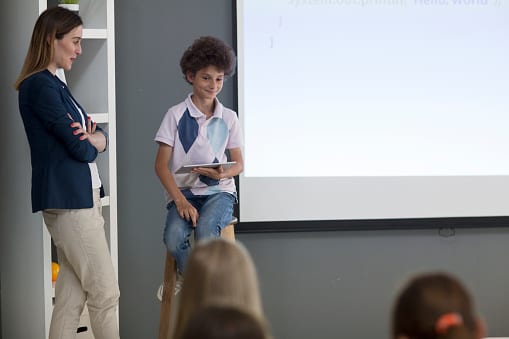The worlds of learning and technology recently lost a giant, Seymour Papert. The Professor Emeritus at MIT, creator of the Logo programming language, pioneer of the Constructionist theory of learning and a founding faculty member of the MIT Media Lab passed away recently at his home in Maine.
While attending a conference on mathematics education in Hanoi in 2006, Dr. Papert suffered a serious brain injury when struck by a motor scooter. That accident removed him from active participation in the educational technology arena, but his influence continued to loom large.
What Education Owes to Seymour Papert
American education is rediscovering an understanding that children learn best when they are actively engaged in constructing their own knowledge, an idea Papert was championing in the 1960s. The MIT Media Lab has published a brief overview of Dr. Papert’s work and plans to host a celebration of the life and work of Seymour Papert in the coming months. Will Richardson and Gary Stager, curator of DailyPapert.com, are working on updating the collected writings of Seymour Papert.
Years ago, I watched Dr. Papert do a Logo demonstration at NECC or maybe it was NAEYC. On a stage in a large auditorium, he worked with a small group of first graders that he had never seen before, introducing them to the Logo turtle and guiding them through a few exercises. Knowing something about working with young children, I remember thinking how brave he was. But it didn’t take long for the children to forget about the large audience and get totally involved with the turtle and Dr. Papert. Even in the short time allotted, it was clear that they got it.
Part of the magic was that Dr. Papert never underestimated children, never talked down to them. Long before “coding for all,” Papert believed in “computational fluency for all.” I’m not sure what Dr. Papert would think about teaching coding, but I know that he would support developing children’s computational thinking skills. The goal isn’t coding, it’s learning to think like computer scientists.
Later, when Dr. Papert had moved to Maine and was helping Governor Angus King establish the first statewide one-to-one program, which provided every 7th & 8th grader with a laptop, I got to know Seymour just a bit. It was then that I understood how he had managed that demonstration all those year earlier. Seymour was still a child at heart. He jumped into whatever he was doing whole heartedly and still found everything around him fascinating. His spirit was irrepressible.
